Liz Luisada

Summer, Fall, Winter, Spring
Liz Luisada lives and works in a rural community in Eastern Pennsylvania. Her house in the woods is across from a lake, and her studio is a former storefront on a commercial strip in town. In this picture-perfect environment she works a variety of jobs and raises her son. Luisada’s artwork – primarily watercolors on handmade papers – is intimately tied to her life experiences.
For Edition No.19 of KLAUSGALLERY.cloud, Luisada has woven a pictorial fable in response to the politics of her surroundings. Pennsylvania is one of the nation’s “swing states” and, therefore, national attention comes to her town every political season. Luisada has found herself in a place where her vote and those of her neighbors truly count. She’s advocated for candidates and issues she believes in. She is also heavily influenced by the nature that surrounds her, and spends time working in her garden. Her studio practice comes out of her daily activities, functioning consistently as a meditative and reflective practice. For this series of 4 works on paper (Summer, Fall, Winter, Spring) she depicts a phrase learned on social media: Compost the Patriarchy. Luisada has created allegorical imagery of the cyclical process of working the land and harvesting the garden. Starting with Summer, and moving through the Fall and Winter, female figures work to turn patriarchal figures into rich Spring compost from which to grow a nourishing garden.

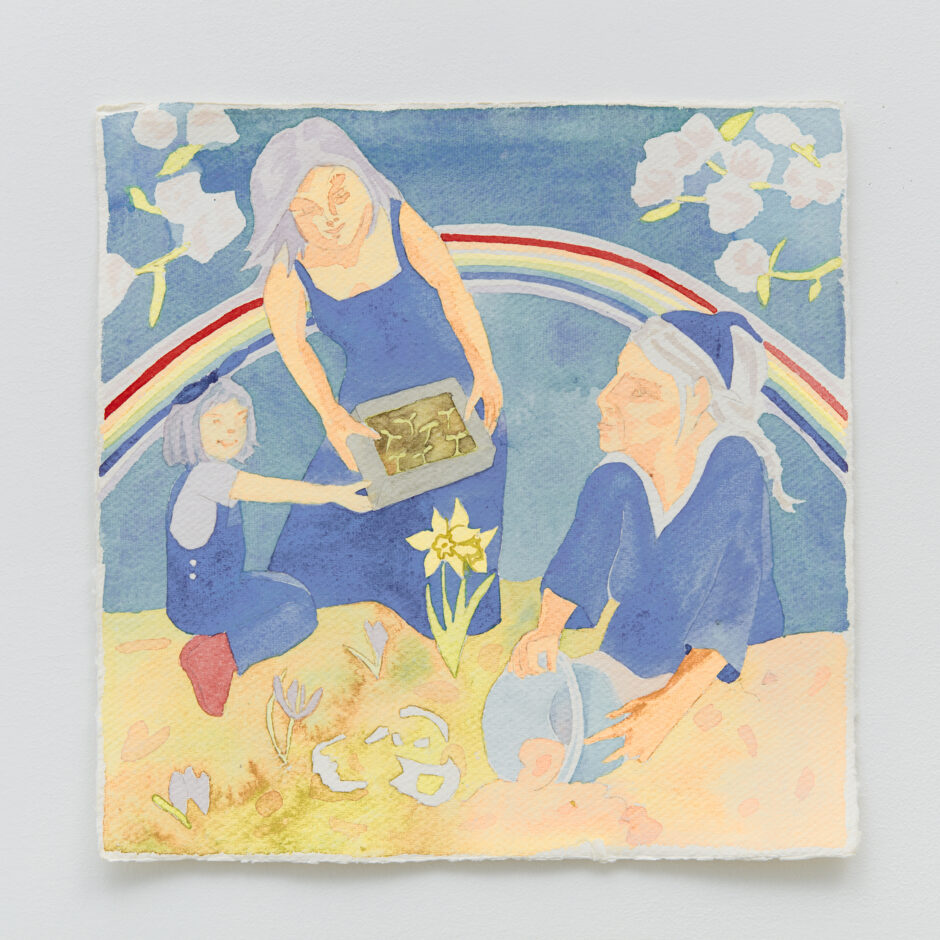
Where is your studio and what is your studio routine? My studio is in Forest City Pennsylvania, I like to call it the Forest City arts district. It’s one of the most affordable towns with lots of cheap space left over from its industrial/mining past—so we have a lot of artists and interesting characters!
What is your studio routine? I usually go to studio for a few hours several days a week. If I’m into a painting I just jump in and work on that. If I’m between paintings I tidy up and look at my collection of small experiment paintings and find something I want to expand on. Sometimes I just make more small experiment paintings where I try anything. I like to listen to books and podcasts when I paint.
Does your daily life influence your work? I spend a lot of time in the garden, which feels like my other artistic endeavor. I like working with volunteer plants that pop up; studying how they behave and interact with the other plants. I also work as a gardener when my son is at school, so I get to spend a lot of time outside. The garden and it’s natural cycles is a place of refuge for me. I’ve been learning whole systems yard design which I draw in the studio sometimes. It feels like a tangible way to help move the land we are on to our new climate reality.
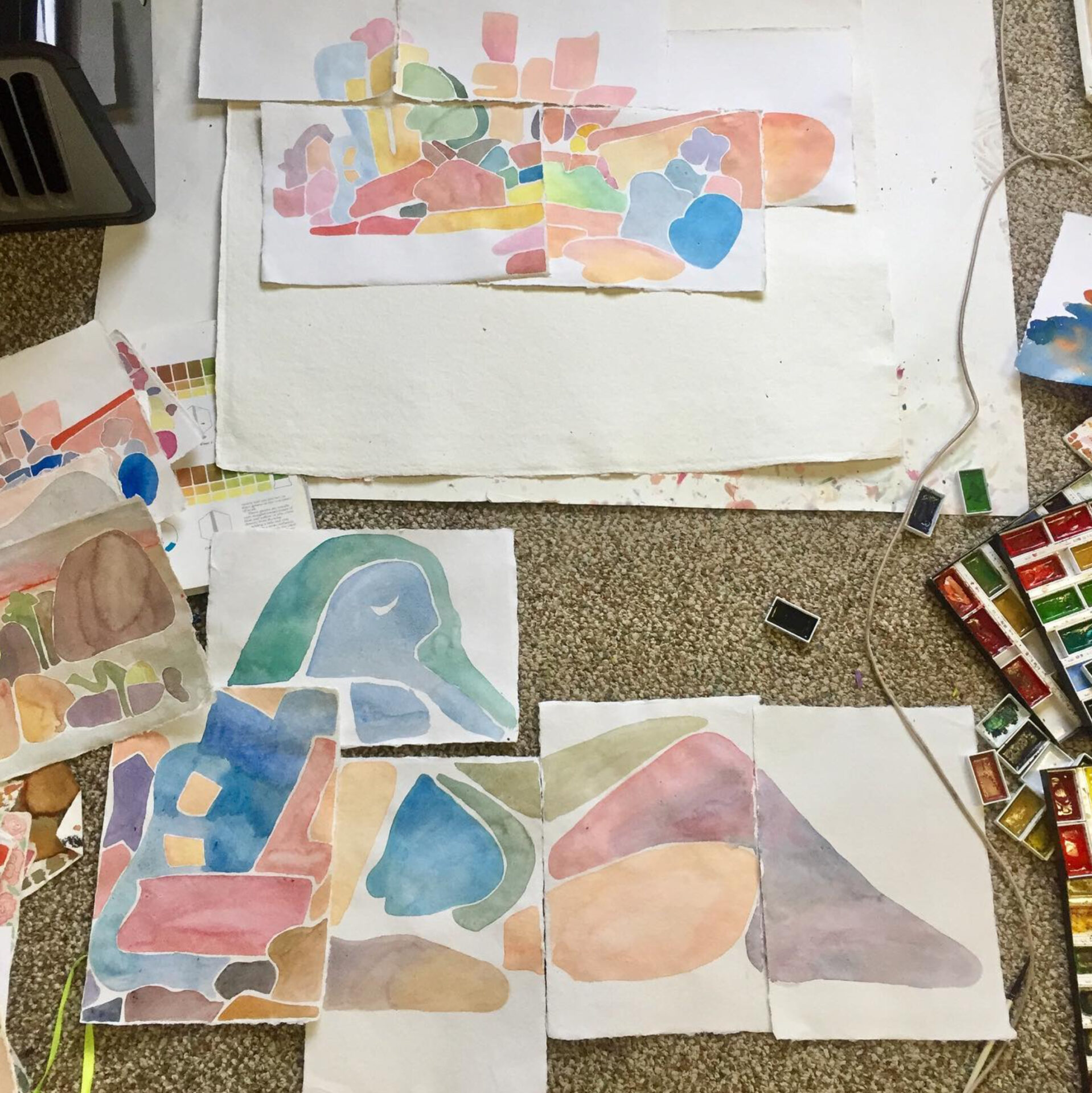
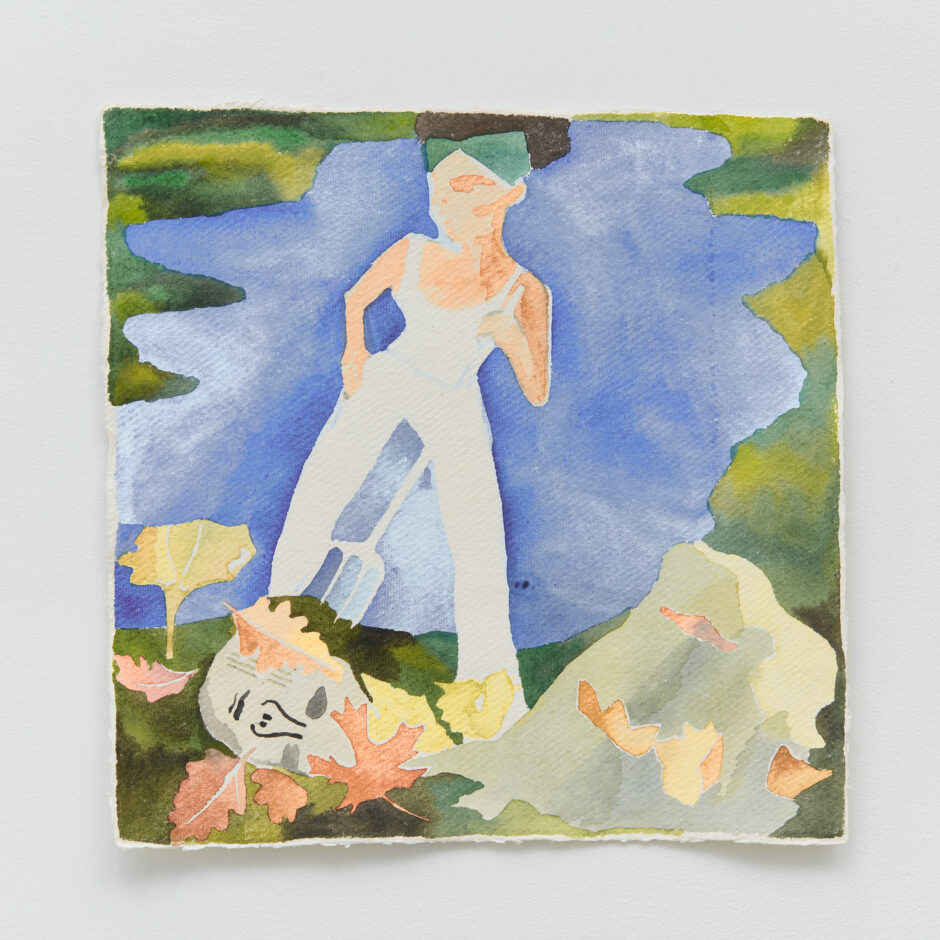 Why do you use watercolor to make your work? I paint with watercolors because I like the way they sink into the paper—I like using a medium that is absorbed instead of sitting on top of the surface. And I like that watercolors mix well. I’m very choosy about my watercolors, kuratake and Prang are my favorite because the colors have excellent coverage. Watercolors are easy to move around, affordable and don’t require a lot of wasteful garbage or fumes like a lot of other paints. Also, no fear of spontaneous combustion like with oil paints!
Why do you use watercolor to make your work? I paint with watercolors because I like the way they sink into the paper—I like using a medium that is absorbed instead of sitting on top of the surface. And I like that watercolors mix well. I’m very choosy about my watercolors, kuratake and Prang are my favorite because the colors have excellent coverage. Watercolors are easy to move around, affordable and don’t require a lot of wasteful garbage or fumes like a lot of other paints. Also, no fear of spontaneous combustion like with oil paints!
What kind of role does the social / political environment play in your work? Lately I have been contemplating geologic time and our place in the cosmos; painting stars and space, also large and small pattern paintings. The pattern paintings are also emotional self regulation for these troubled times!! Sometimes painting is like attending to the political battles, persuading, organizing—it’s the smallest potatoes in the vast existential cliff that we spend our lives looking over. I think we are in a really awkward place as Americans on the precipice of climate disaster and capitalism run amok. It’s hard to know how to live right now.
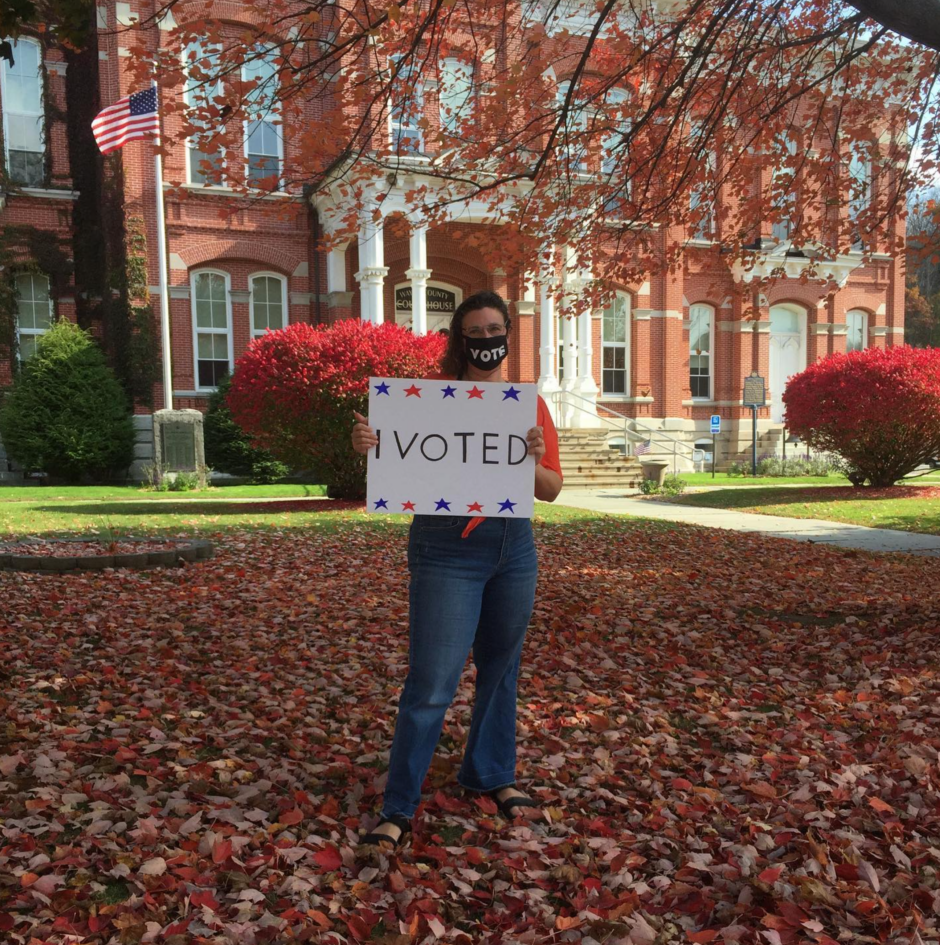
I like tapping into my anger, especially in the morning. Like how Johnny Rotten sang “Anger is an Energy.” I feel it literally when listening to legislative news in the morning, it’s better than coffee! I get all worked up and get on the phone with my activist friend Tierney. She’s a brilliant librarian, and we really go beast mode—organizing postcards, registering folks to vote, canvassing, calling—all that stuff. It’s going to take all our talents. We have lost so much in just a year. This time last year we had bodily autonomy—now there are trans families fleeing, massive attacks on public education, unbelievable cruelty in the name of “life.” It feels like grim times in that way. Not to mention the work of helping the earth transition through climate change. 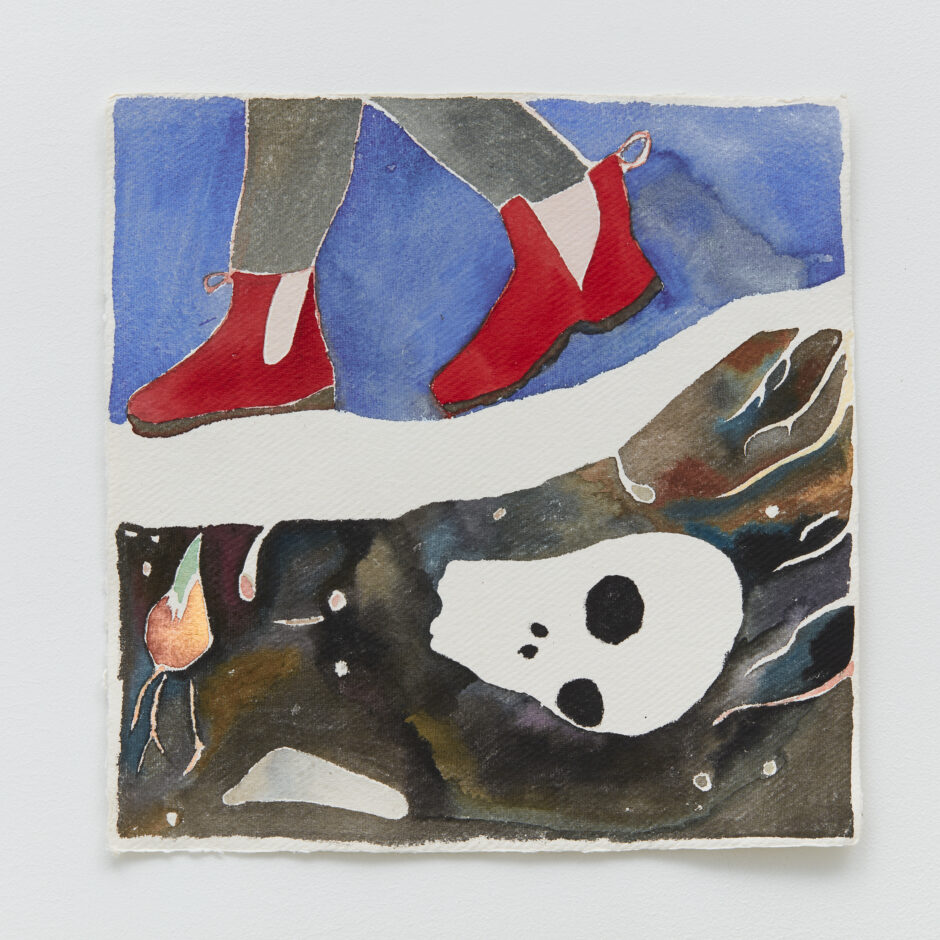
What does “compost the patriarchy” mean to you? I saw the phrase “Compost the Patriarchy” on hats sold by gardener @jjmgrows on instagram and I loved it! I feels like what we need right now. All the toxic masculinity that poisons the earth and our cultures can go right into the compost heap!
Compost is so magical because it’s where everything ends and where everything starts—eaten by fungi and microorganisms—creating all the nutrients needed to feed the next generation.
I am so glad the younger generation is exploring and dismantling so many harmful systems from binary gender, to structural racism, to income inequality. It feels like the proverbial fruits of the compost heap. Fertile ground to grow a new world!
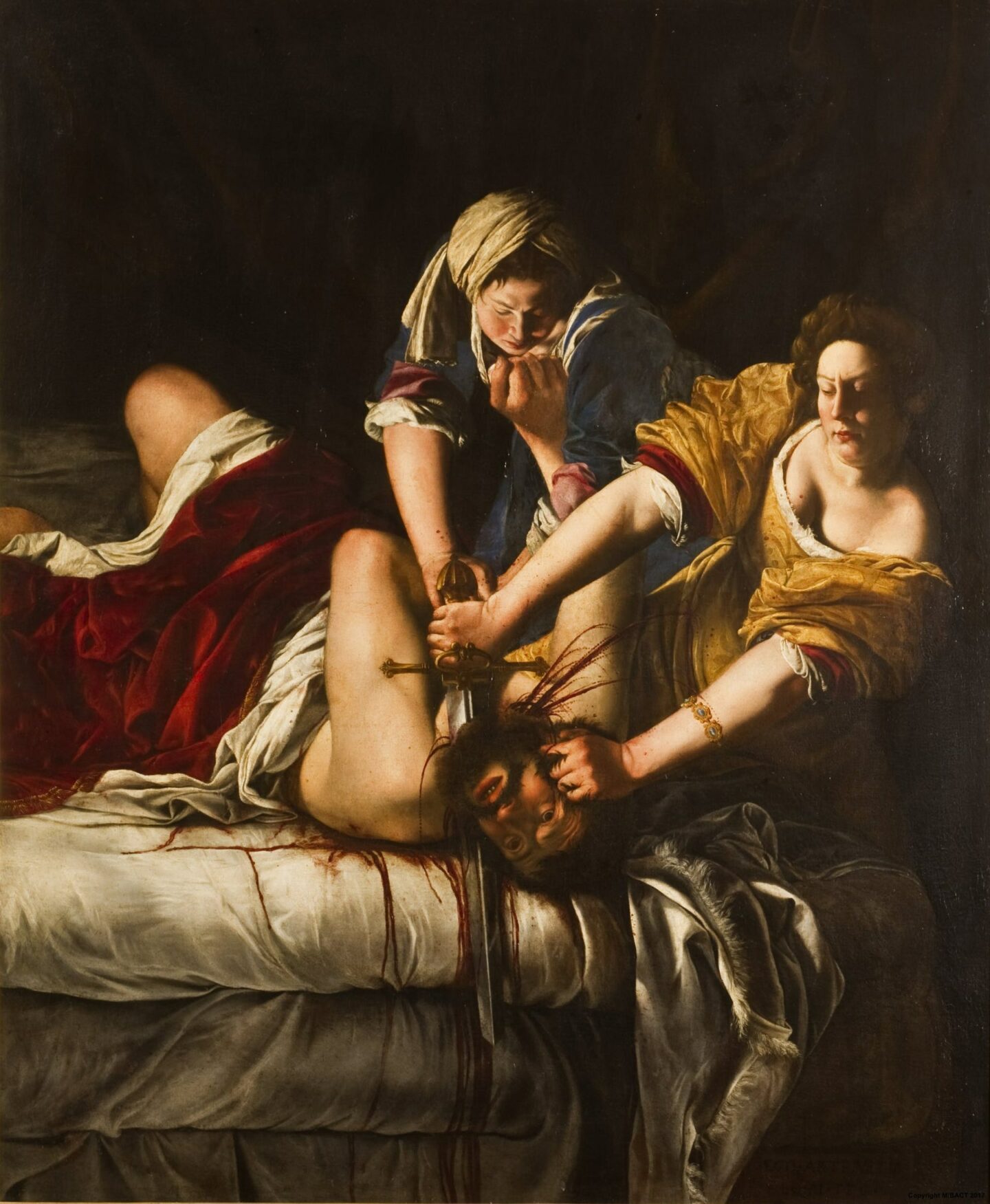
Luisada’s “Summer” is inspired by Artemisia Gentileschi’s, “Judith Slaying Holofernes”. Gentileschi’s painting depicts a biblical story from the Book of Judith — Judith assassinates General Holofernes of the Assyrian army in order to save the people of Bethulia from suffering under his siege.
Caravaggio painted the subject earlier, rendering Judith with an emotional ambivalence towards her actions. Gentileschi’s Judith is painted with a focus on the labor of the killing highlighting the idea of enacting justice.
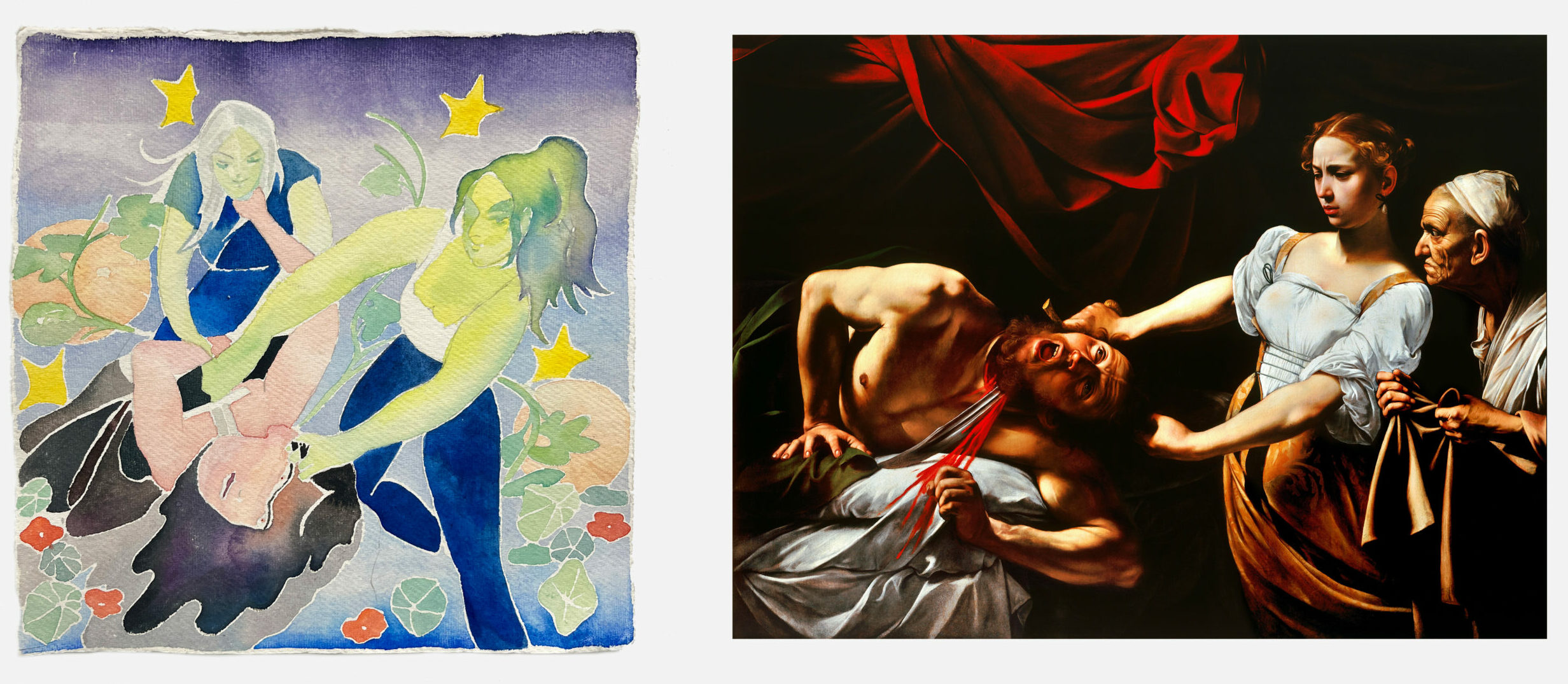
Liz Luisada, Summer, 2023. Caravaggio, Judith Beheading Holofernes, c. 1598
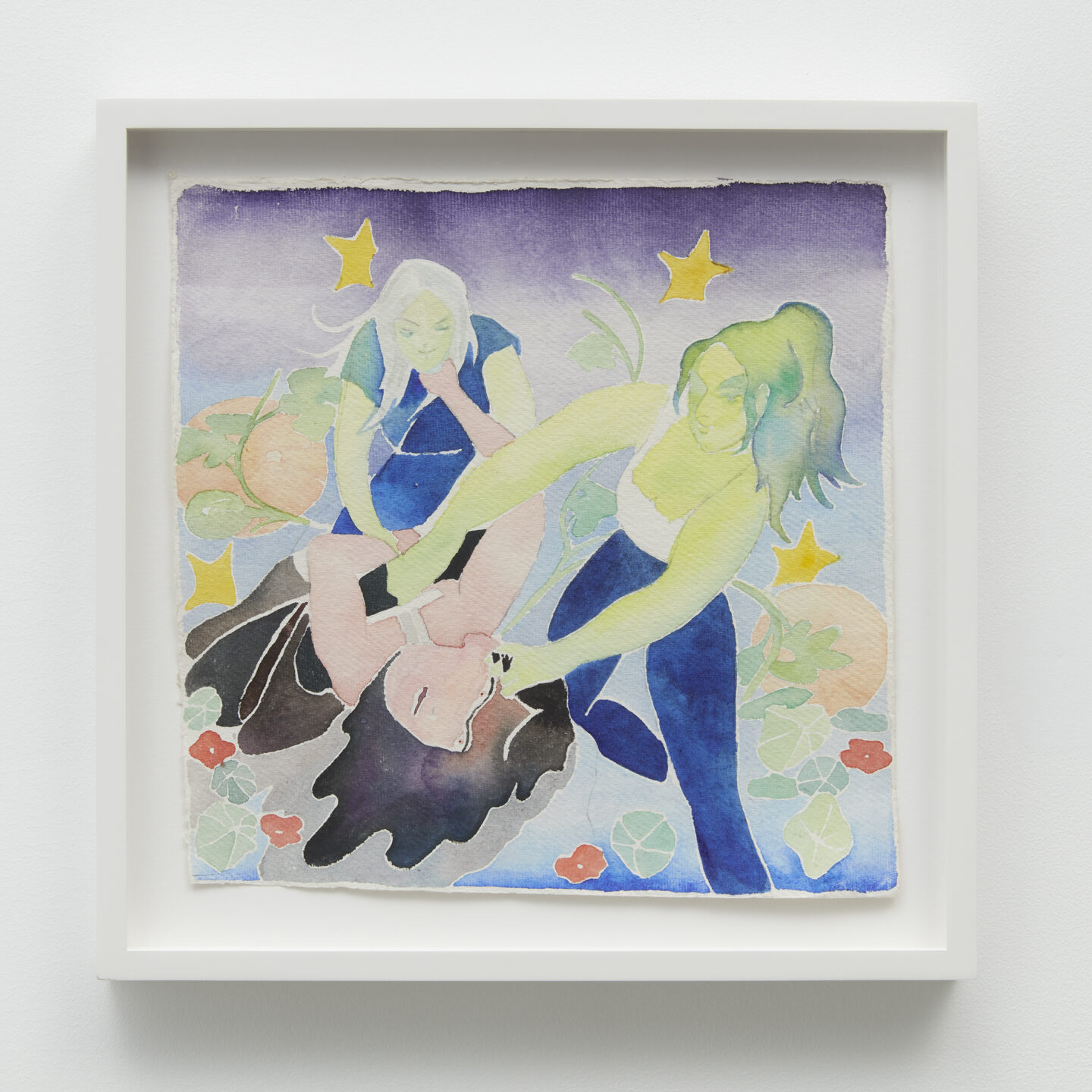
Summer, 2017
watercolor on paper
12 × 12 inches (30.48 × 30.48 cm)
$1,200 unframed; $1,550 framed
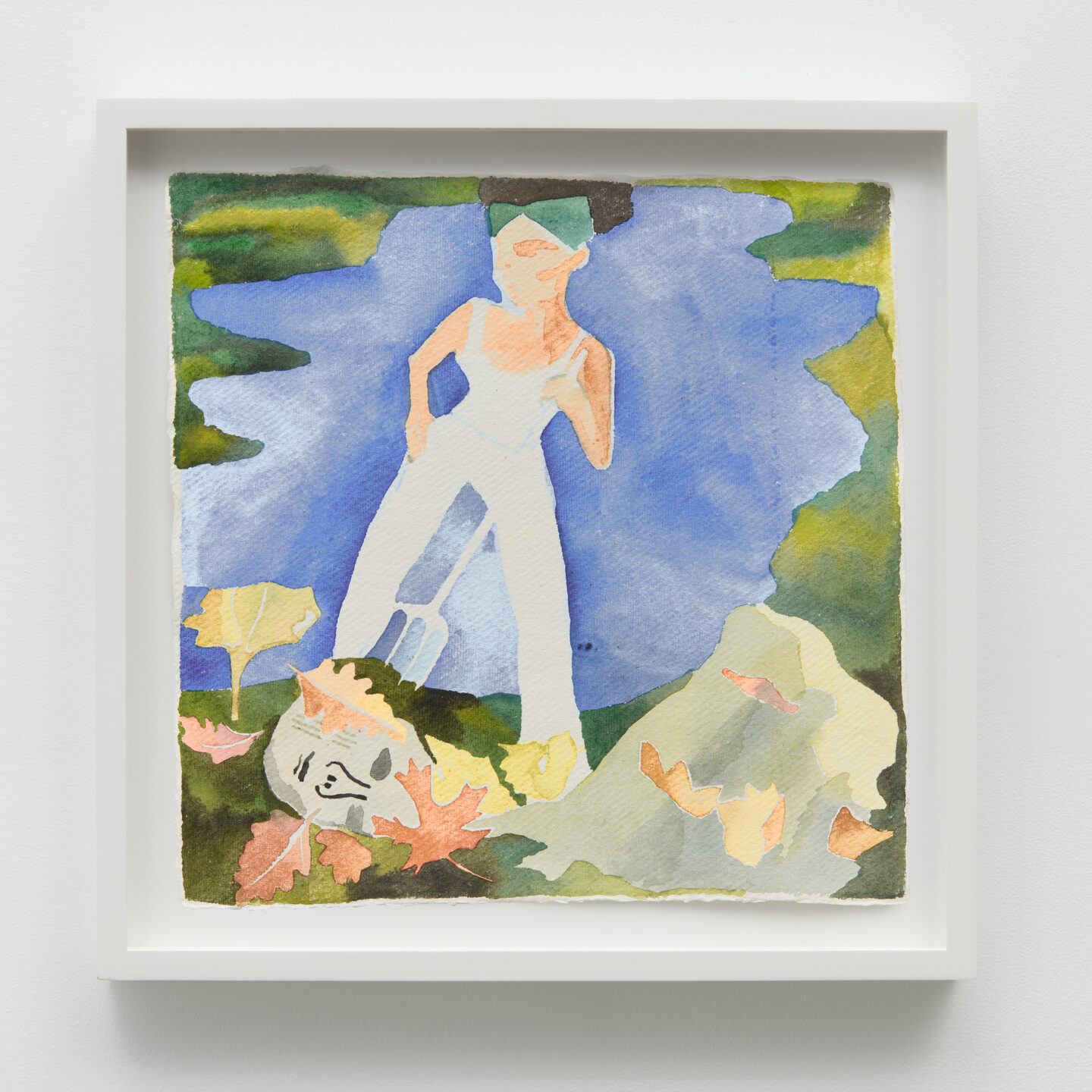
Fall, 2017
watercolor on paper
12 × 12 inches (30.48 × 30.48 cm)
$1,200 unframed; $1,550 framed
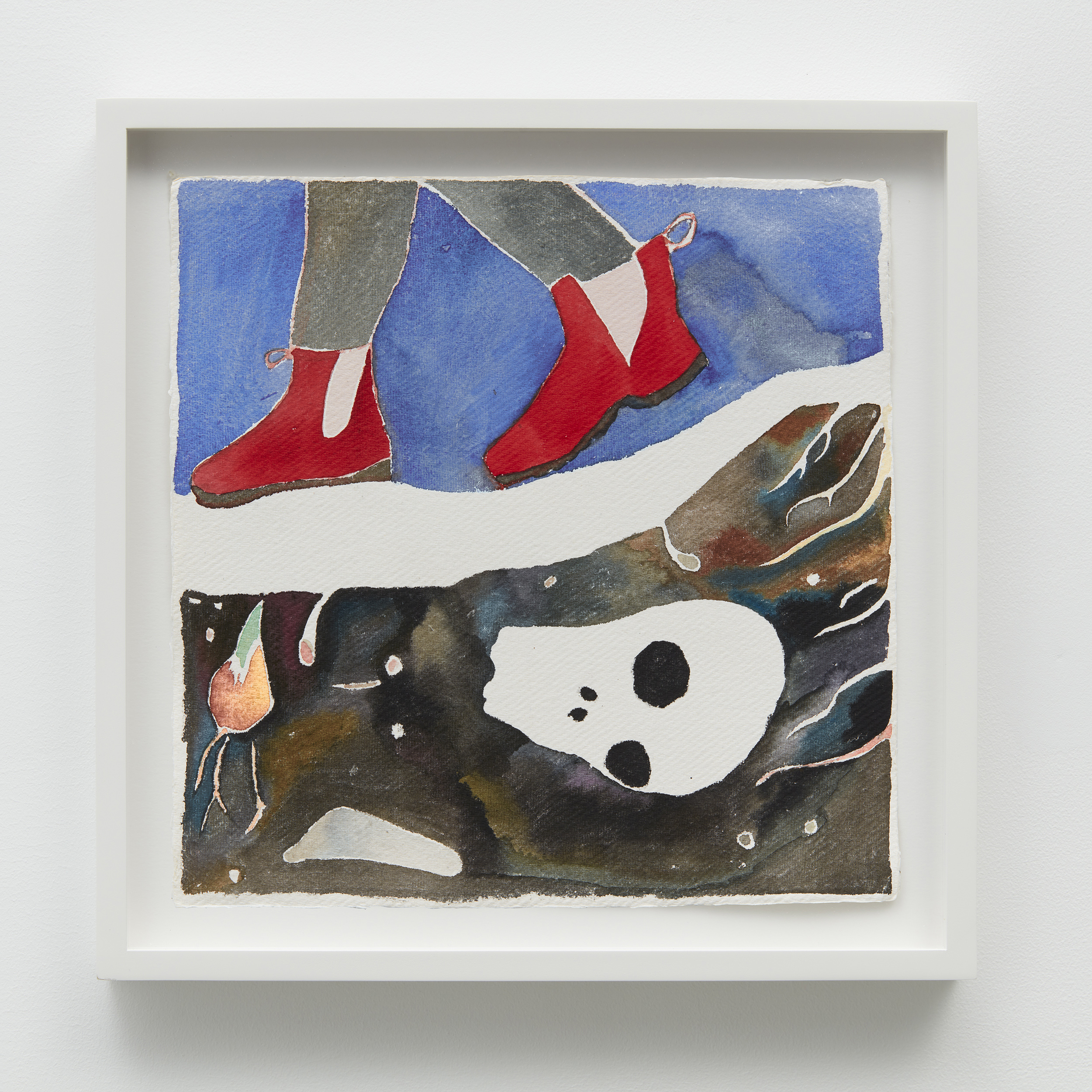
Winter, 2017
watercolor on paper
12 × 12 inches (30.48 × 30.48 cm)
$1,200 unframed; $1,550 framed
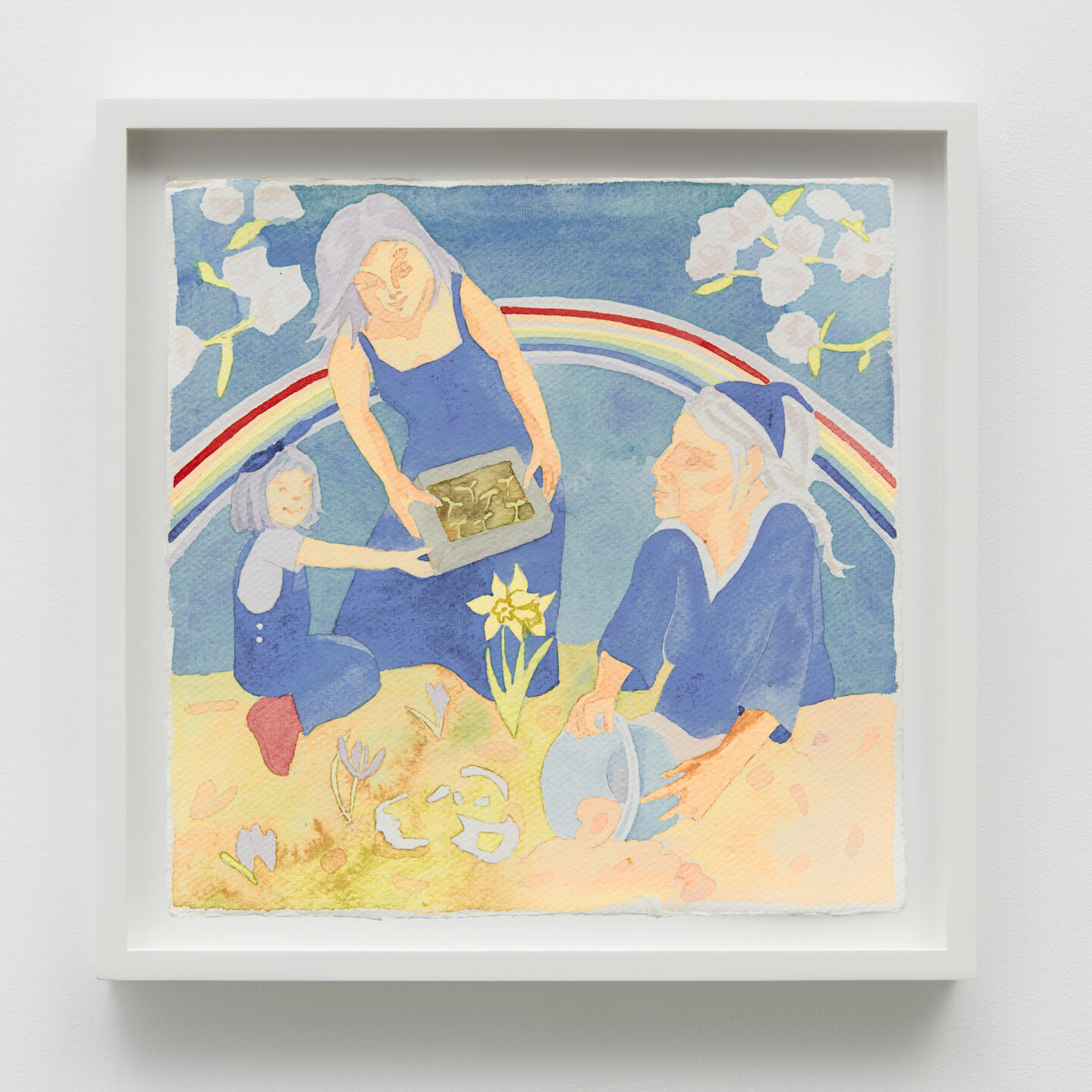
Spring, 2017
watercolor on paper
12 × 12 inches (30.48 × 30.48 cm)
$1,200 unframed, $1,550 framed
Find Your Way
In 2018 Liz Luisada first showed her watercolors at the gallery. The show, called Find Your Way, was installed in an irregular line to feel like a path through the woods. The work, overtly feminine, ranged from abstract to figurative. Traveling the show one would find pieces that were riotous, celebratory, and spiritual.
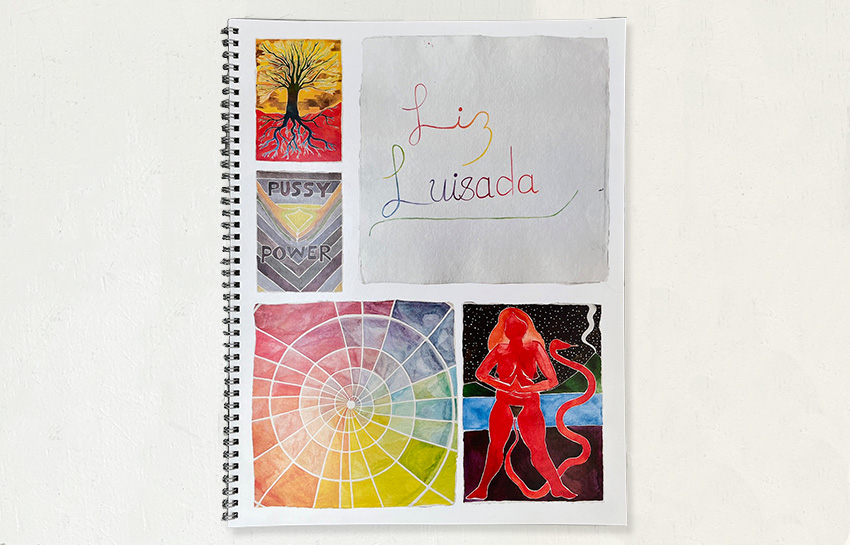
LARGE FORMAT CATALOG for Find Your Way, Liz Luisada’s 2018 solo show at Klaus von Nichtssagend Gallery. Includes a poem by Luisada. 14 pages, 11 x 14 inches, Full color, Wire-O bound
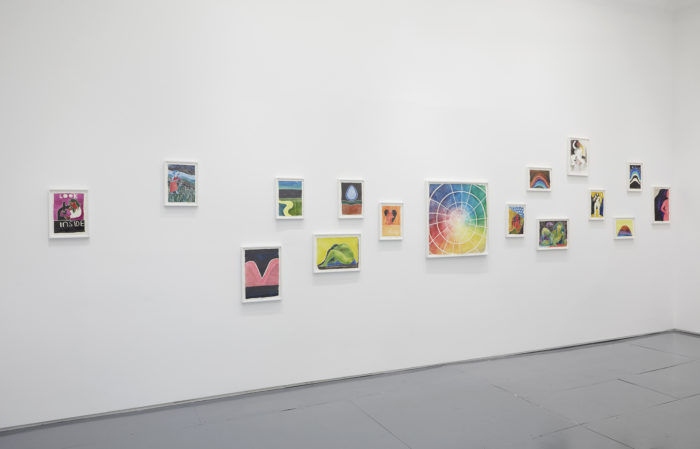
FIND OUT MORE: See the full documentation of the 24 watercolors included in Liz Luisada’s “Find Your Way” exhibition at Klaus von Nitchssagend Gallery.